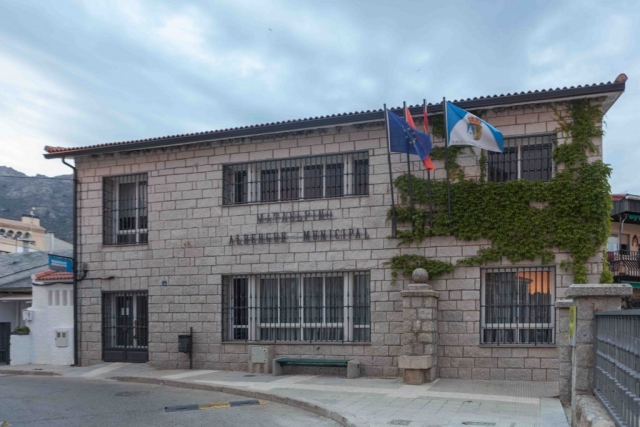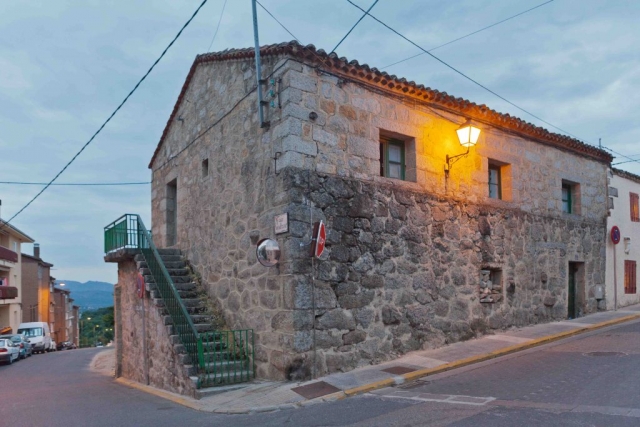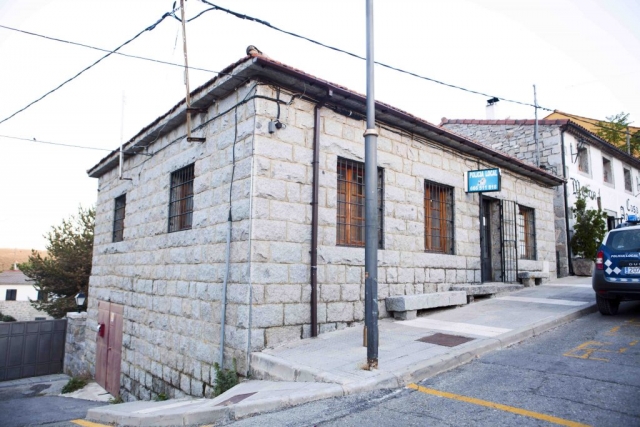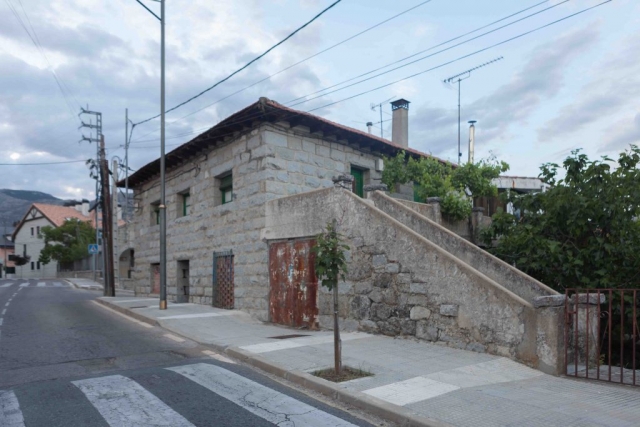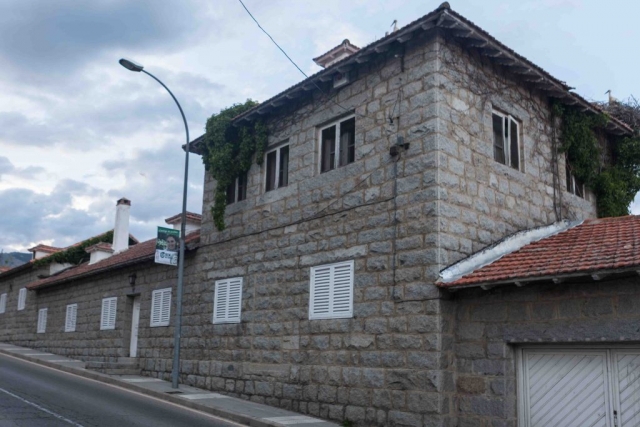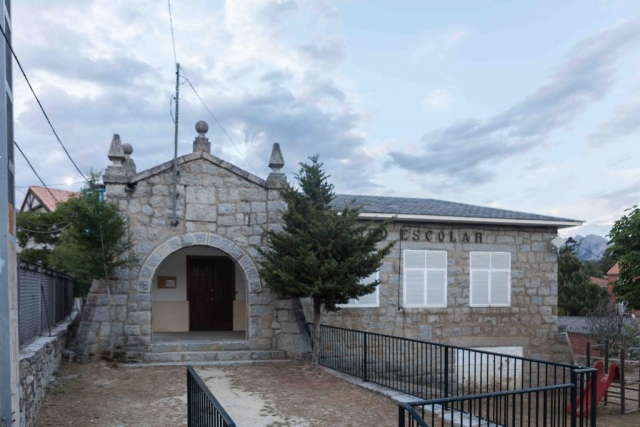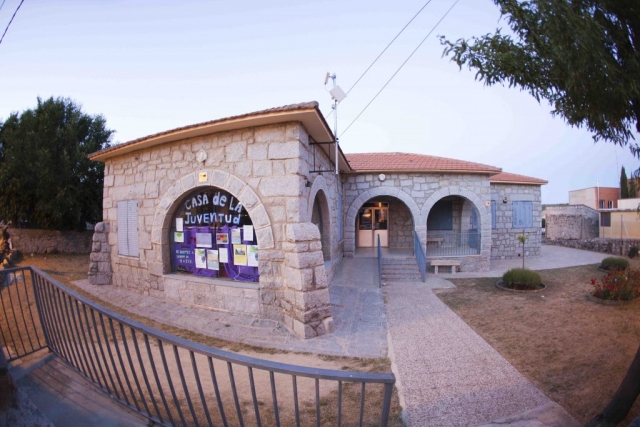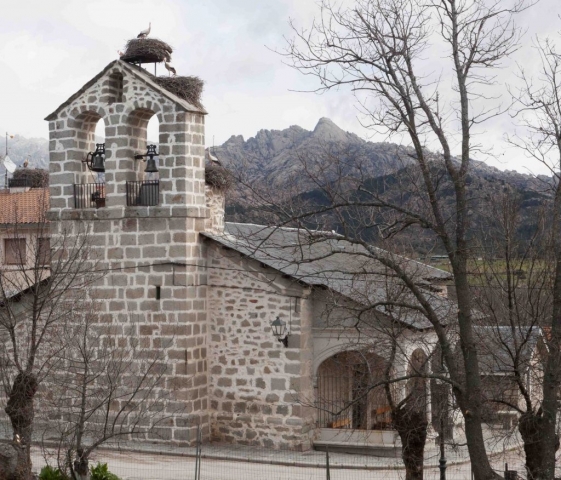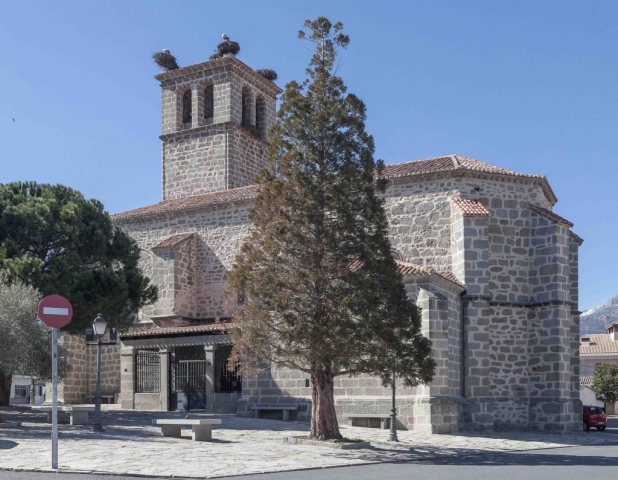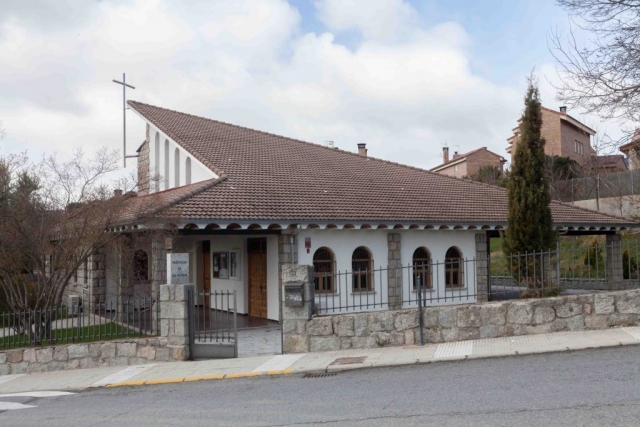Traditional Housing– The town structure is different in each of our three; Mataelpino and el Boalo are more dispersed and random, whereas in Cerceda is quite organised and regular, creating a semicircle shape around the square.
The structure of both the town centres and the housing are quite distinct in each town, but they were all aimed at achieving the same goals: houses that adapted to the locals’ main activities, stockbreeding and quarry work. The traditional houses normally had just one floor, were built with granite blocks of more or less the same size, and had some annexed constructions such as a stable, as can be seen throughout the area.
In El Boalo, houses were located in the northwestern part of the town centre, while in Cerceda they were located all throughout the centre. All of them have made way for other more modern buildings as a consequence of the municipality’s economic development, which has gone from a stockbreeding and rural economy to a service sector one.
Traditional jobs – Just like in the rest of the Sierra de Guadarrama area, traditional jobs have disappeared bit by bit over time, though some of the main economic activities of the past can still be found.
Quarrying is one of them, especially in Cerceda, where the three main industries of the Community of Madrid can be found. El Boalo and Mataelpino are the benchmark of equine stockbreeding and there are plenty of breeding sheds. Cow breeding still remains, while sheep breeding has almost entirely disappeared. The few farming activities that remained at the beginning of the 20th century have started to disappear and the land started being used for cattle grazing.
Tourism has become one of the most important economic activities these days due to the huge amount of visitors who come to Sierra de Guadarrama, especially to La Pedriza and the different areas boasting outstanding natural beauty that can be found in the immediate surroundings.
Monuments – The town’s most important religious building is the Santa María la Blanca Church, from the 16th century and designated as a Historical National Monument in Cerceda. It is located in the southeastern part of the town centre, a triangular square with great views of the nearby mountains. It was made of rough ashlar, except for the sacristy, which is made from regular rough ashlar from a later period. The style is abulense gothic and the bell tower is a standout feature. Inside, a Herrerian-style altarpiece and pure renaissance-style baptismal basin can be found.
In El Boalo we can find the San Sebastian Parish Church, dating back to the 17th century, whose bell tower is more than noteworthy. It has been restored several times. The San Isidro Chapel can also be found here, recently built by the locals with the help of their neighbours from the other two towns. It is located on the Los Porrones hillside, a magnificent landscape to behold.
Mataelpino was previously home to the San Andrés Parish Church built in the 16th century, though it no longer exists. In its place now sits the Santa Águeda Church, built right on top of the previously existing foundation.
Traditional festivals – There are three very interesting traditional festivals, one in each town. In Cerceda, it’s the Santísimo Cristo de la Esperanza Festival, held on September 14 with a procession honouring Cristo de la Esperanza. As part of the procession, locals hold a dinner consisting of rabbit as the main ingredient. In the past, these rabbits were hunted especially for this one occasion.
In El Boalo, it’s the Festival of San Sebastián, the patron saint of the town, that is celebrated each January 20. It is thought to be the municipality’s oldest festival is believed to be in celebration of the traditional pig slaughters. The altar lamp is lit at night, and festival-goers can enjoy the taste of chocolate with anise and traditional pork rind cakes.
And since it couldn’t be any other way, Mataelpino also celebrates its traditional festival, el Día de las Águedas, a day on which those acting as matriarchs during the day give all the orders in town.
These are three festivals with deep roots connecting the traditional way of life in these mountain villages with the customs associated with their natural environment.
As is quite typical throughout the whole Sierra de Guadarrama area, each of these patronal festivals that are celebrated in the three towns during the summer is accompanied by a traditional bullfight.



